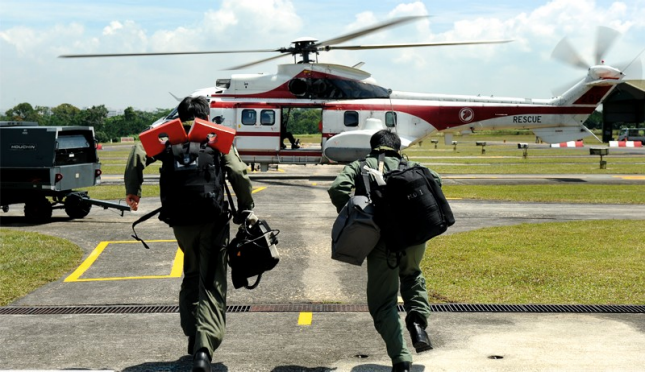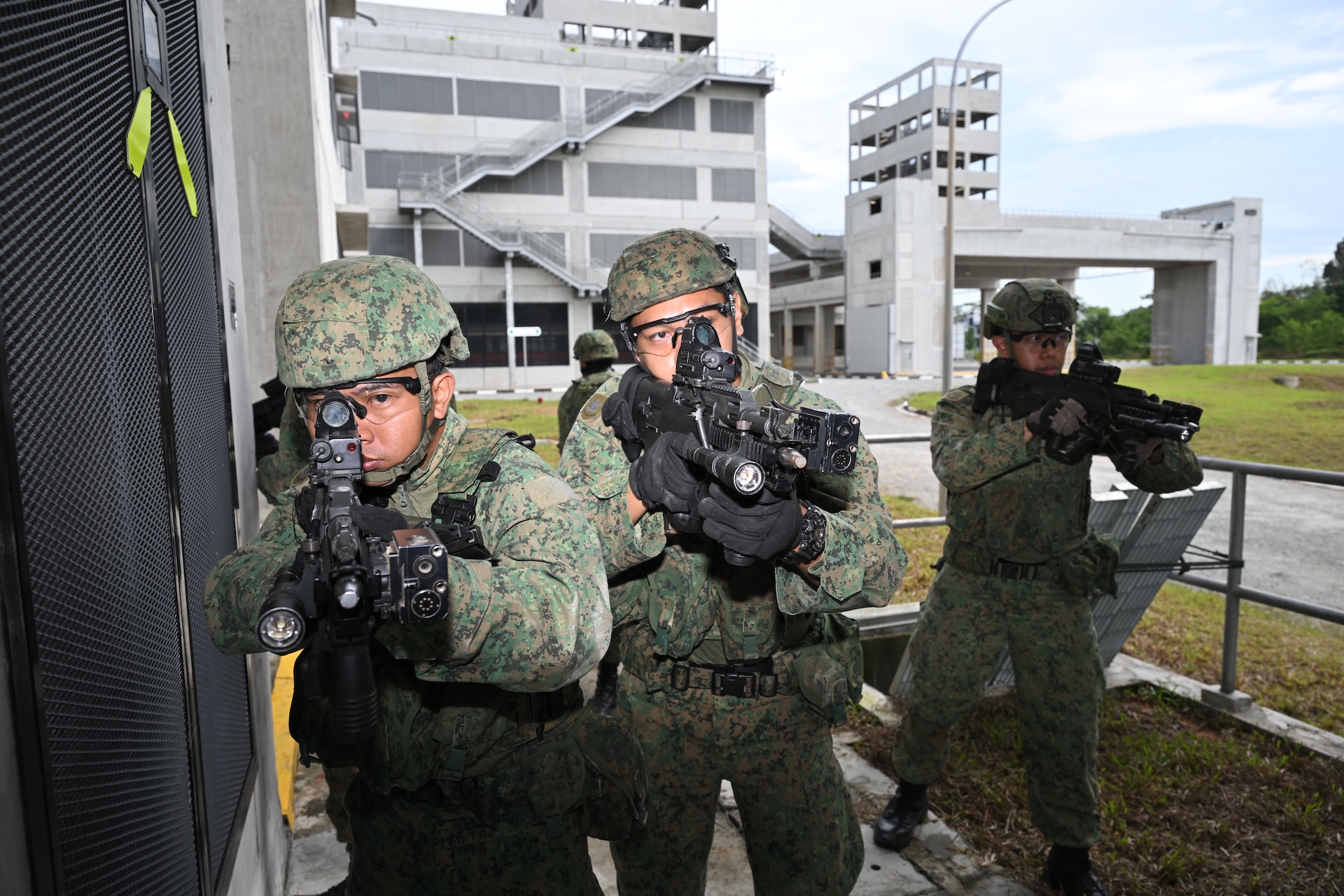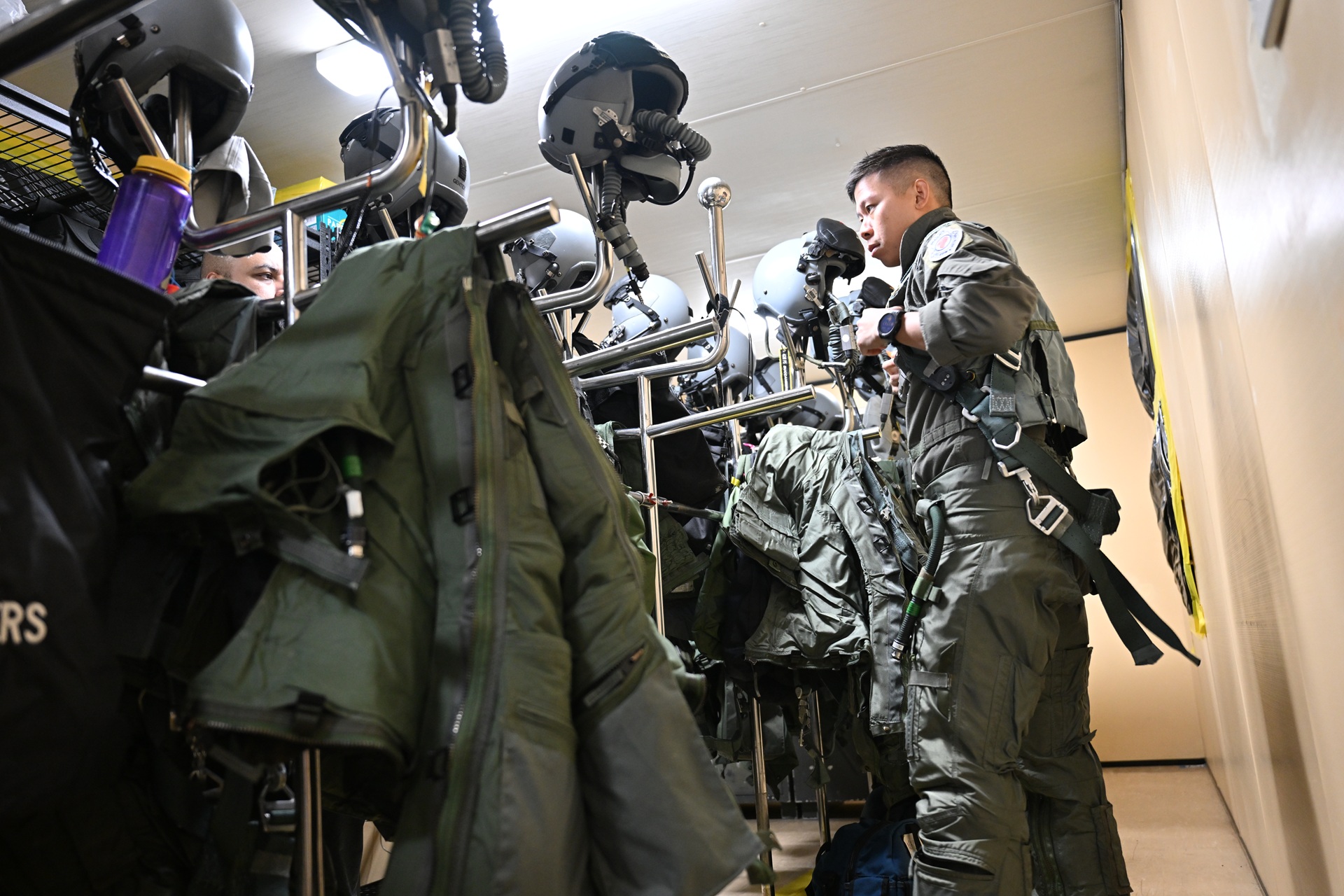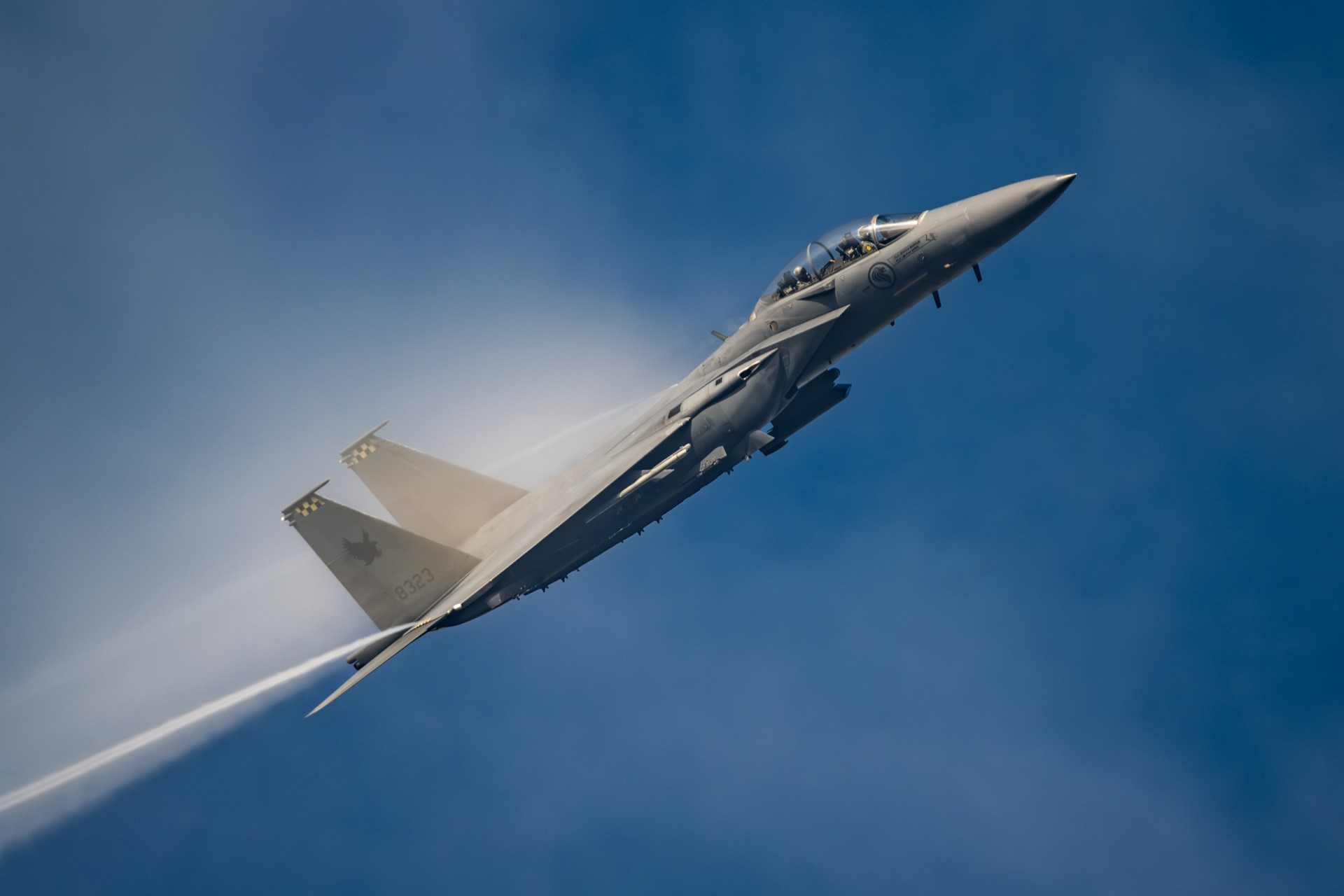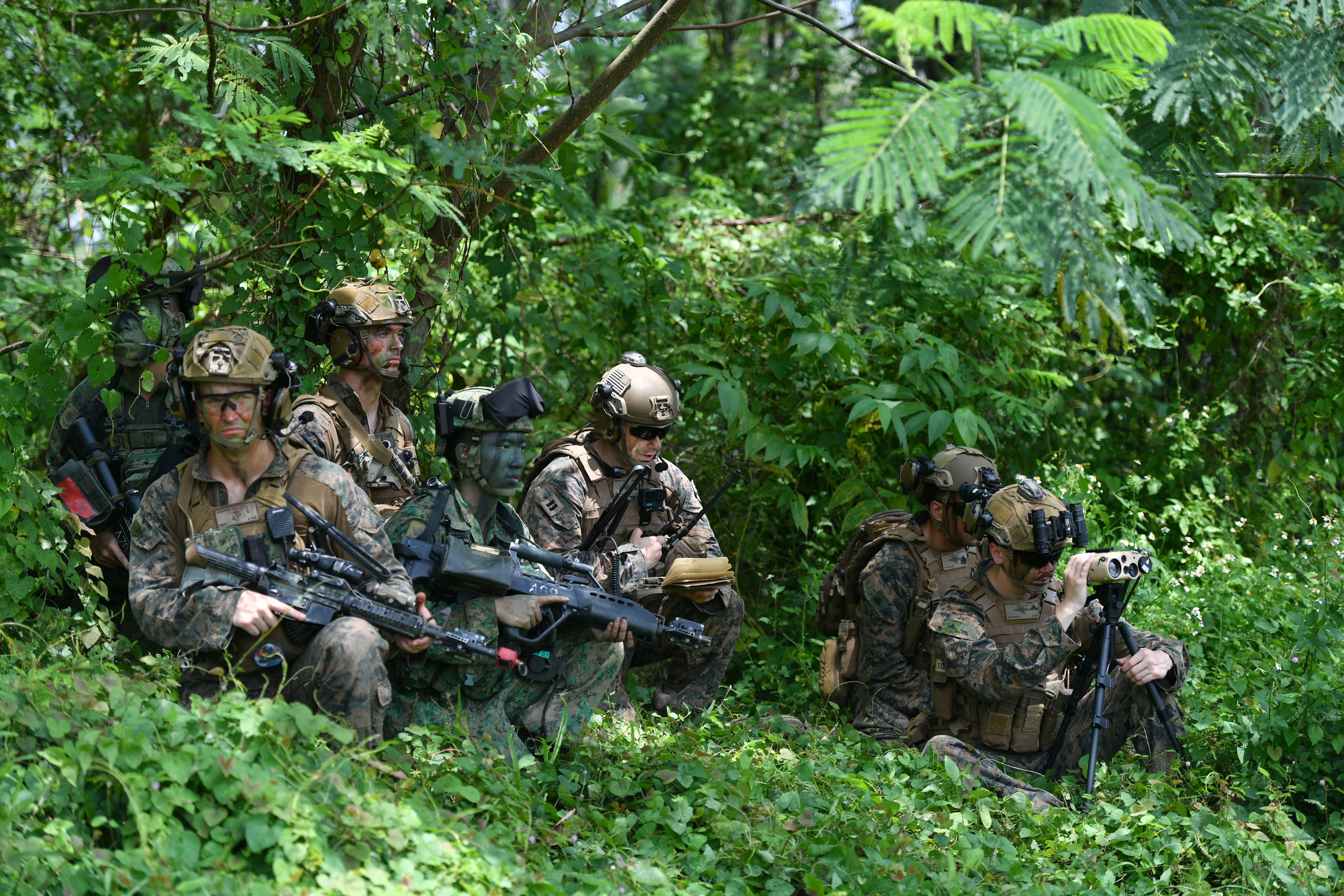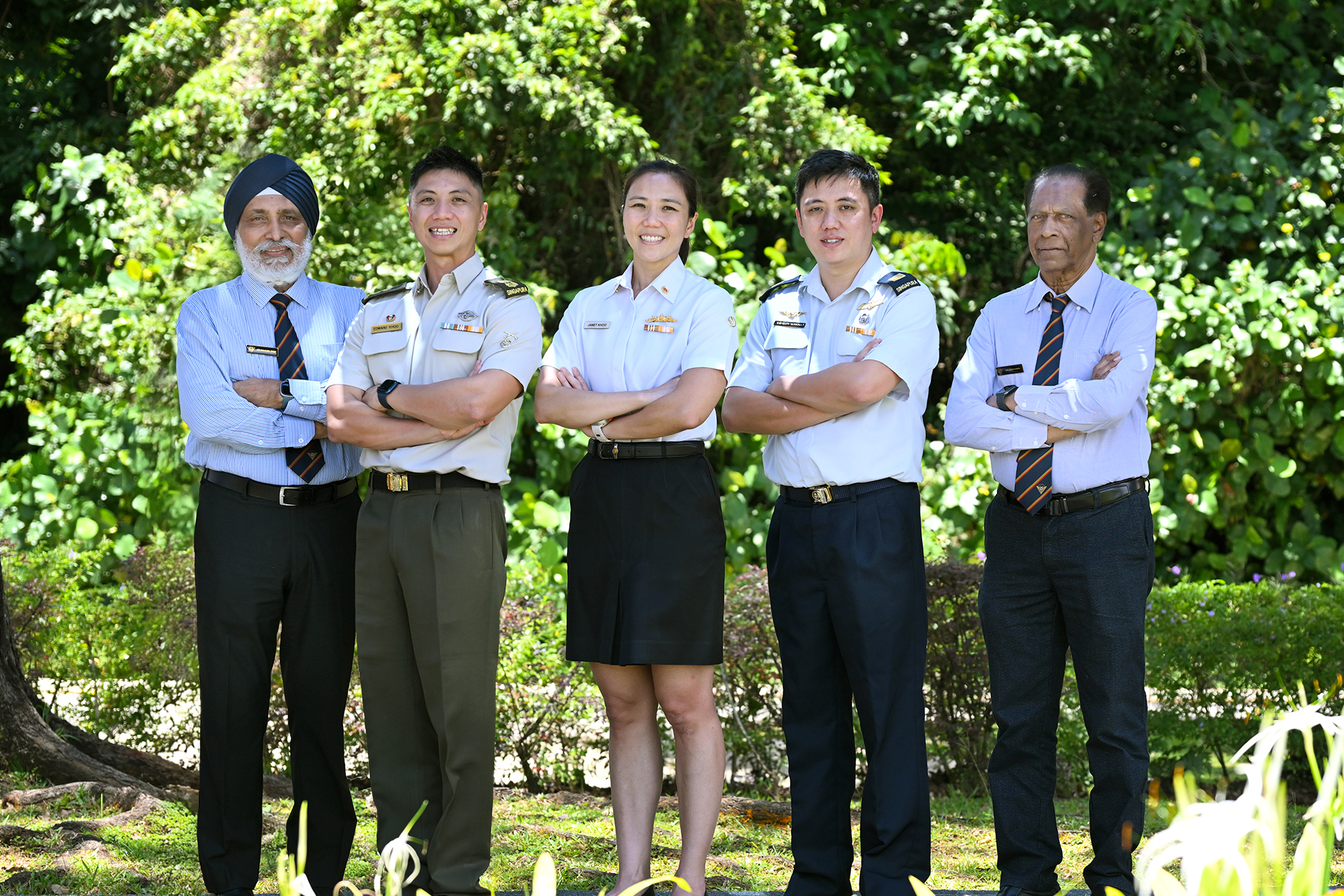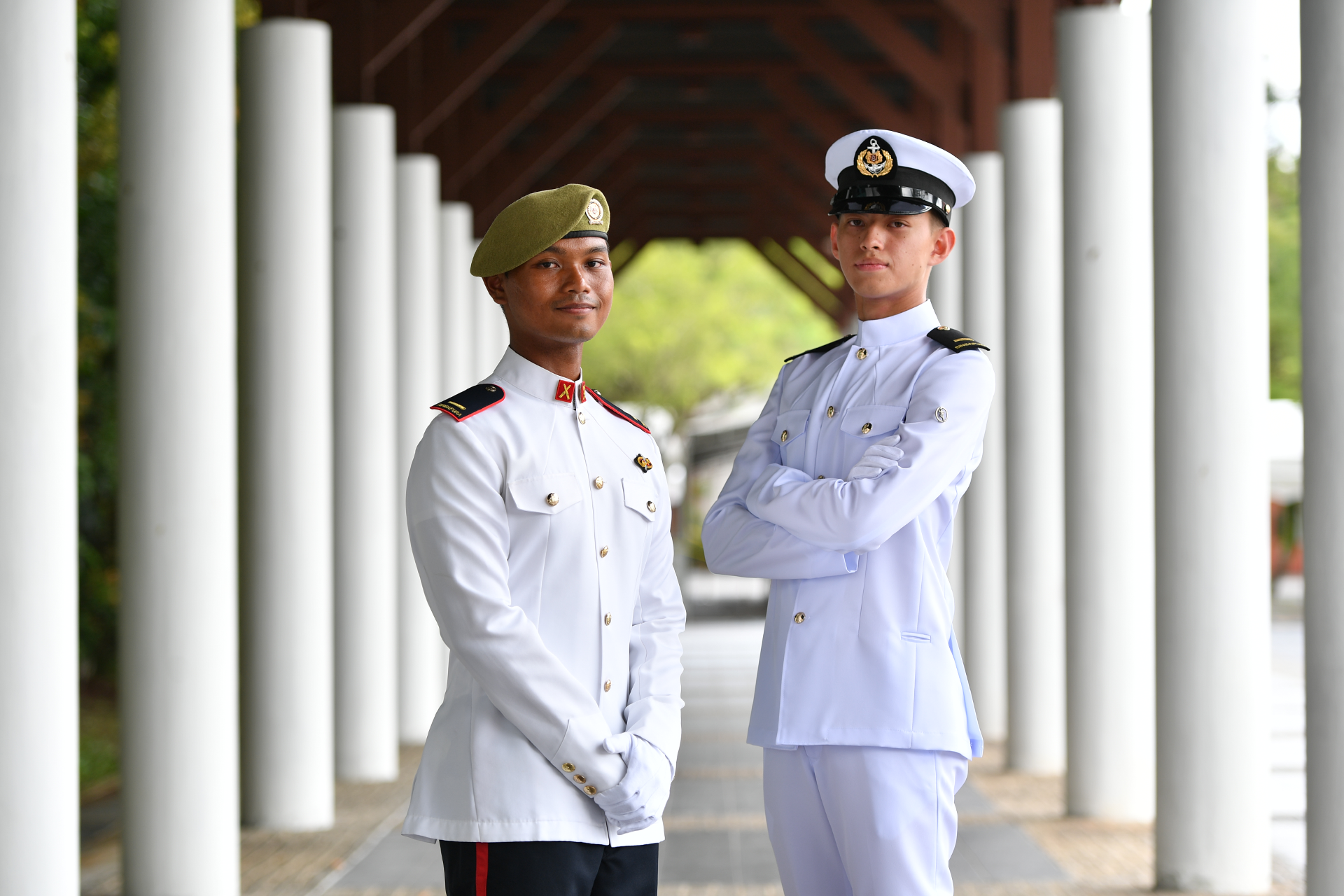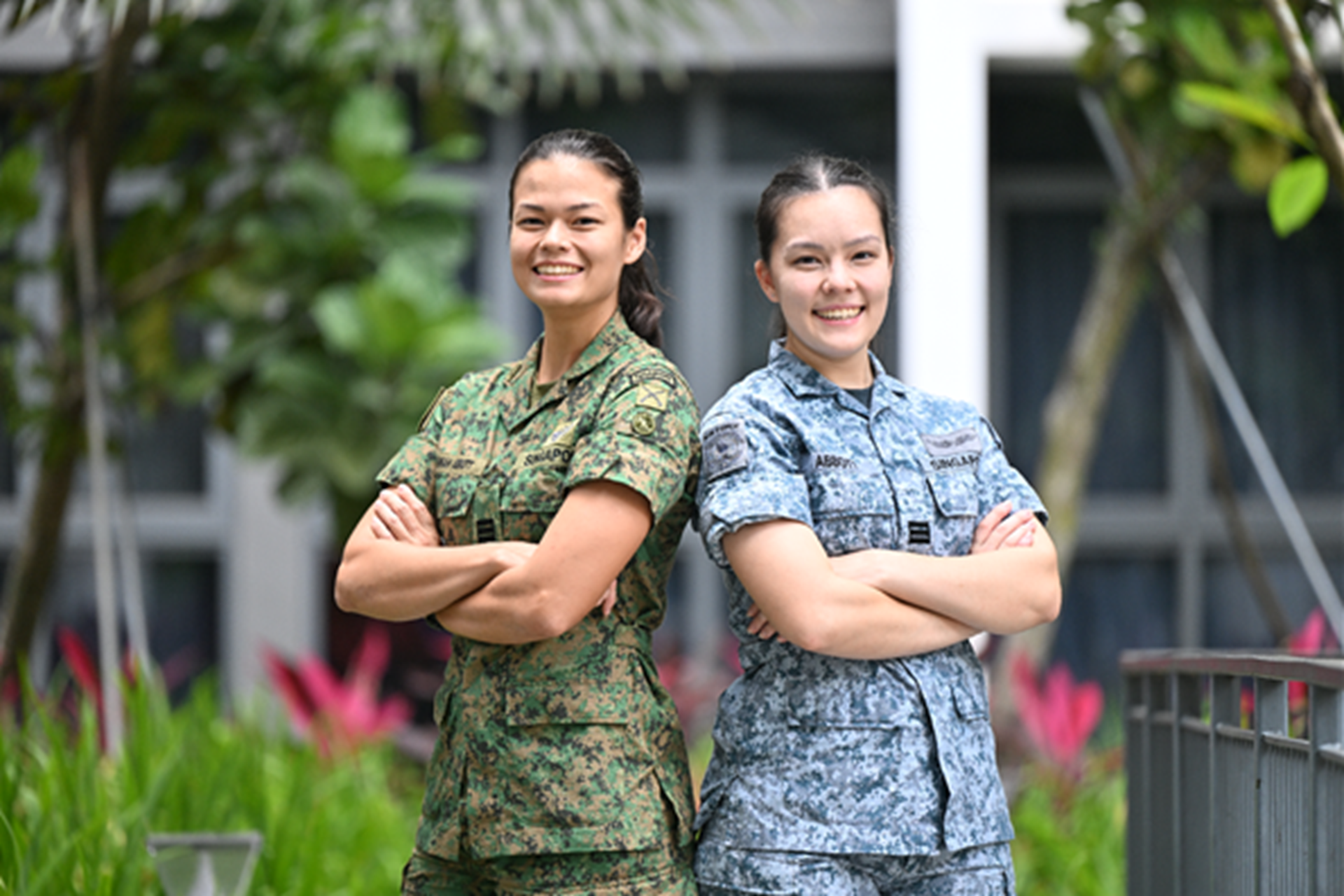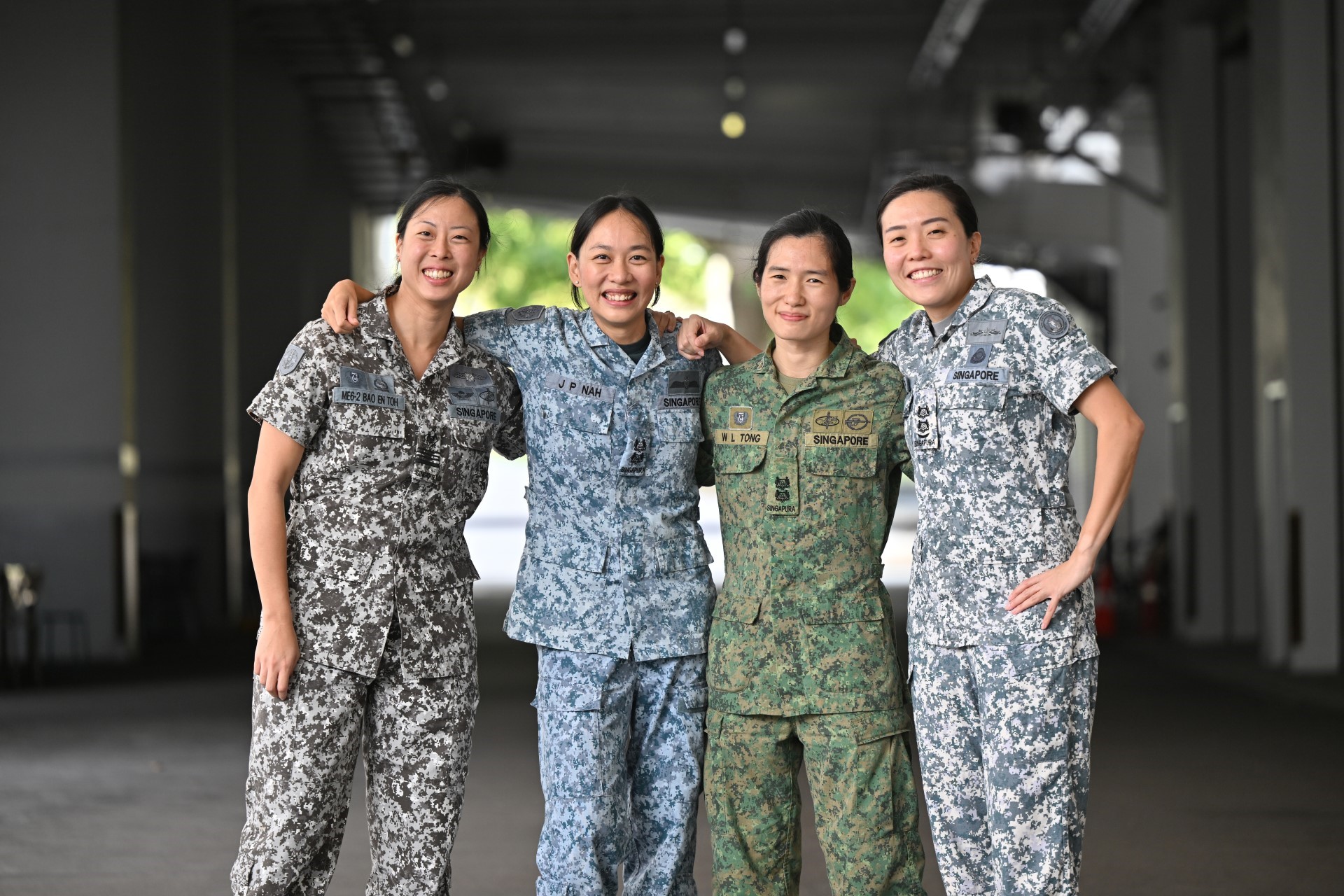TO THE RESCUE!
PHOTO // PIONEER Photographers
They're speedy and brave. They help to save lives and can even fly. Meet the real-life superheroes from the Republic of Singapore Air Force's (RSAF's) 125 Squadron (SQN) who carry out search and rescue (SAR) missions.
It's a helpless feeling, to be injured and adrift at sea or lost in a dense jungle, miles away from the medical attention you need.
But imagine the gush of relief when you hear the rhythmic sound of spinning rotor blades and see a red and white helicopter approaching. Minutes later, medical professionals are attending to you as you are transported to the nearest hospital.
While that seems like the stuff action flicks are made of, it's all in a day's work for the RSAF's SAR squadrons such as 125 SQN.
According to Commanding Officer of 125 SQN Lieutenant Colonel Sherman Ong, SAR has been a key peacetime capability of the RSAF since 1969, when it took delivery of its first Alouette III helicopters.
With the Super Puma helicopters that it now operates, 125 SQN's primary duty in peacetime is SAR, although it also supports SAF training such as providing troop lifts for soldiers.
The squadron's SAR capability also supports the national outfit Rescue Coordination Centre whenever the need arises. The centre, staffed by personnel from the Civil Aviation Authority of Singapore and agencies such as the Maritime and Port Authority of Singapore and the Singapore Civil Defence Force, coordinates SAR operations for persons in distress within the Singapore Search and Rescue Region.
Race against time
On a typical day, the pace of life in 125 SQN is like that of your regular military unit. There are training sorties or flights, briefings, meetings and jovial interactions among the crew, some of whom are on standby round the clock.
But that changes the moment the scramble alarm blares. Then, it's all systems go.
Pilots and Air Crew Specialists (ACSes) dash to grab their personal equipment from the crew room before sprinting to the helicopter on standby.
As the captain and co-pilot start up the aircraft, the two ACSes prepare the equipment in the cabin, depending on the type of rescue mission. With the boarding of a Medical Officer (MO) and a medic from 1 Medical SQN (1MS), the helicopter swiftly takes off from the landing pad. All that happens in just 15 minutes.
"From the time we're activated, we have to be airborne within 15 minutes. That's a guide, although we generally achieve it within 10 minutes. Since it's about saving lives, we always try to take off as soon as possible," said Captain (CPT) Ng Swee Wen, a pilot in the squadron.
Life on a line
The urgency of the situation is a given when the team is scrambled. Thus, the SAR team gets only very basic information upon activation. This usually means just a brief description of the casualty's condition and his or her location.
Once the casualty is transferred to the aircraft, the medical duo in the cabin administer aid to the casualty en route to the hospital for further medical intervention.
While it sounds like an aerial ambulance service, it is much more, said 1st Sergeant (1SG) (NS) Liew Kok Yang, an ACS in 125 SQN: "Of course, the ideal way to carry out our mission is to locate the casualty, land the helicopter to pick him up, then fly him to the hospital.
"But if the pilots are unable to do a landing because of obstructions in the surroundings such as trees and buildings, or if the distressed person is in the water, that's when we have to winch the casualty up to the hovering helicopter."
As a winch man, 1SG (NS) Liew goes down the line with the MO. After the MO is done assessing the casualty's condition, the casualty is hoisted back to the cabin, before the winch man returns for the MO.
The other ACS, who operates the winch, controls the hoist and ensures that personnel moving up and down the line are safe.
Winch operator Master Sergeant (MSG) Teng Wei Loon added: "During the rescue, I am the communication link between the winch man and the pilots, because I have better visuals of the situation from the cabin."
No easy job
Such rescues, which may look like daredevil stunts to some, require years of experience to execute safely. The winch man, for example, has to deal with turbulence from the helicopter's rotor blades and strong winds during winching.
"These forces can cause us to spin violently, making us giddy and less able to help the casualty. To prevent that, we have to move our arms and legs in a way that will counter the spins," said 1SG (NS) Liew, who trained for a year with 125 SQN before he qualified as a winch man.
According to CPT Ng, the first hurdle for pilots is locating casualties, and that can be hampered by the lack of communication with the casualties. And, of course, poor weather conditions such as heavy rain, strong winds and a bad sea state are a bane for any pilot.
He went on: "At sea, if there's no suitable landing area on the ship, and the ship has many protruding structures that make it hard for us to find a good place to hover, that's also a challenge."
So has the 33-year-old, who has been flying the Super Puma since 2001, encountered an operation that had all the above challenges? "Definitely, because I'm speaking from experience," he replied with a laugh.
"In fact, that was my first SAR scramble when I was a co-pilot in 2008. To me, it was the worst-case scenario, but we managed to complete the mission successfully," he added.
Etched in memory
He cited another memorable incident in a jungle overseas, where he had to evacuate a soldier who sustained an infection from bee stings to the hospital.
"That time, I was the captain," he said, "and it took me a while to find the casualty because we had no communication with him, and the foliage in the jungle was very thick."
After locating the casualty, his team had to winch the soldier up through a small opening in the foliage. "When we were hovering, the margin of error was very small. If we drifted, our winching cable could get entangled with the trees," he recalled, adding that it was a successful mission.
MSG Teng, who was a winch man for about six years before becoming a winch operator in 2003, also had stories to relate.
The 34-year-old ACS spoke of being activated at 2am to rescue a casualty who had suffered a heart attack on an oil tanker in the South China Sea. With no landing pad on the tanker, the helicopter hovered over the bridge of the ship to allow the winch man to go down the line.
However, the downwash from the hovering helicopter made it difficult for the winch man to strap the casualty onto the stretcher, so the pilots flew alongside the moving ship instead.
MSG Teng said: "As I had better visuals of the side of the aircraft, I operated a joystick in the cabin to help the pilots control the aircraft movement so that the aircraft didn't drift.
"Initially, I was nervous, because (back then) I'd never used the joystick during a real operation. But after recalling the training I went through, I got more confident, and we managed to send the casualty to the hospital."
Doing what counts
Their work is challenging, dangerous at times, and inconvenient, with standby duties over weekends and public holidays. So what keeps these individuals going in their missions?
"It's really a meaningful thing to do," said 1SG (NS) Liew, a Revenue Operations Agent in FedEx, who was serving his fourth In-Camp Training with 125 SQN at the time of this interview in July.
He remembered his National Service days, when his peers in the Army envied him for having the rare opportunity to work in an aircraft.
"After I explained my duties to them, they realised that it's about saving lives and not about working with assets, so they were quite impressed."
The 30-year-old, who has taken part in three SAR operations, said: "I mean, how often do you get the chance to save someone's life? So for that, I feel a sense of accomplishment."
For CPT Ng, it's the challenges in his job that he relishes: "In real operations, you work with a lot of uncertainties. That's when you get to exercise your judgement and decision-making skills.
"There's satisfaction in knowing that you made a difference, so I'm quite proud of my job."
His six-year-old son is proud of what he does too. CPT Ng recounted how his son once drew a helicopter with a person doing winching for his homework.
"He wrote 'My Daddy is a pilot. He flies a helicopter. His job is to save people.'"
Ready in 15
From the point of activation to the take-off, here's what the SAR crew do within 15 minutes.
1)
2)
3)
4)
5)
6)
7)
8)
SAR in the news
19 Jan 1983:
Cable car rescue
The mast of a drilling ship had ploughed into the overhead cables of the cable car service that connected Singapore to Sentosa. Seven died, and 13 were left stranded in six dangling cars. The 13 survivors were winched to safety in a late-night rescue by the SAR team from the RSAF's 120 SQN.
15 March 1986:
Hotel New World collapse
When Hotel New World at Serangoon was reduced to rubble, 120 SQN deployed three helicopters to the disaster site to evacuate casualties.
26 Dec 2004:
Boxing Day tsunami
The Indian Ocean tsunami, triggered by an earthquake, ravaged Phuket in Thailand and Aceh in Indonesia, and resulted in a death toll totalling tens of thousands. Chinook helicopters from 127 SQN as well as Super Pumas from 125 SQN were deployed to airlift personnel, equipment, supplies and casualties.
